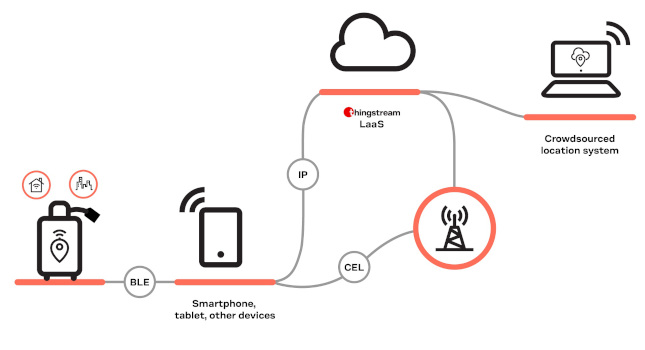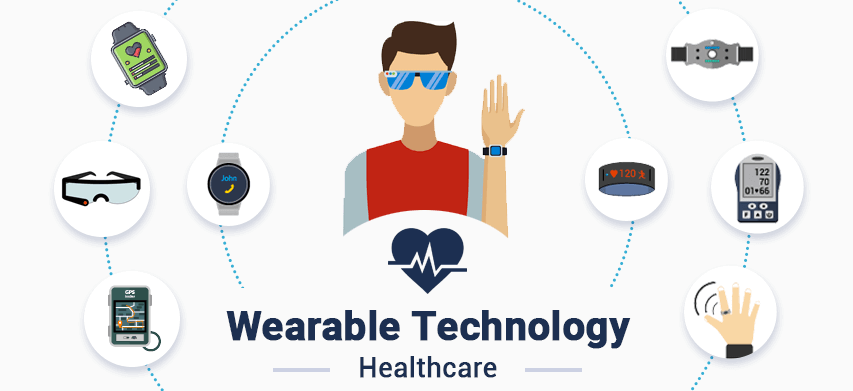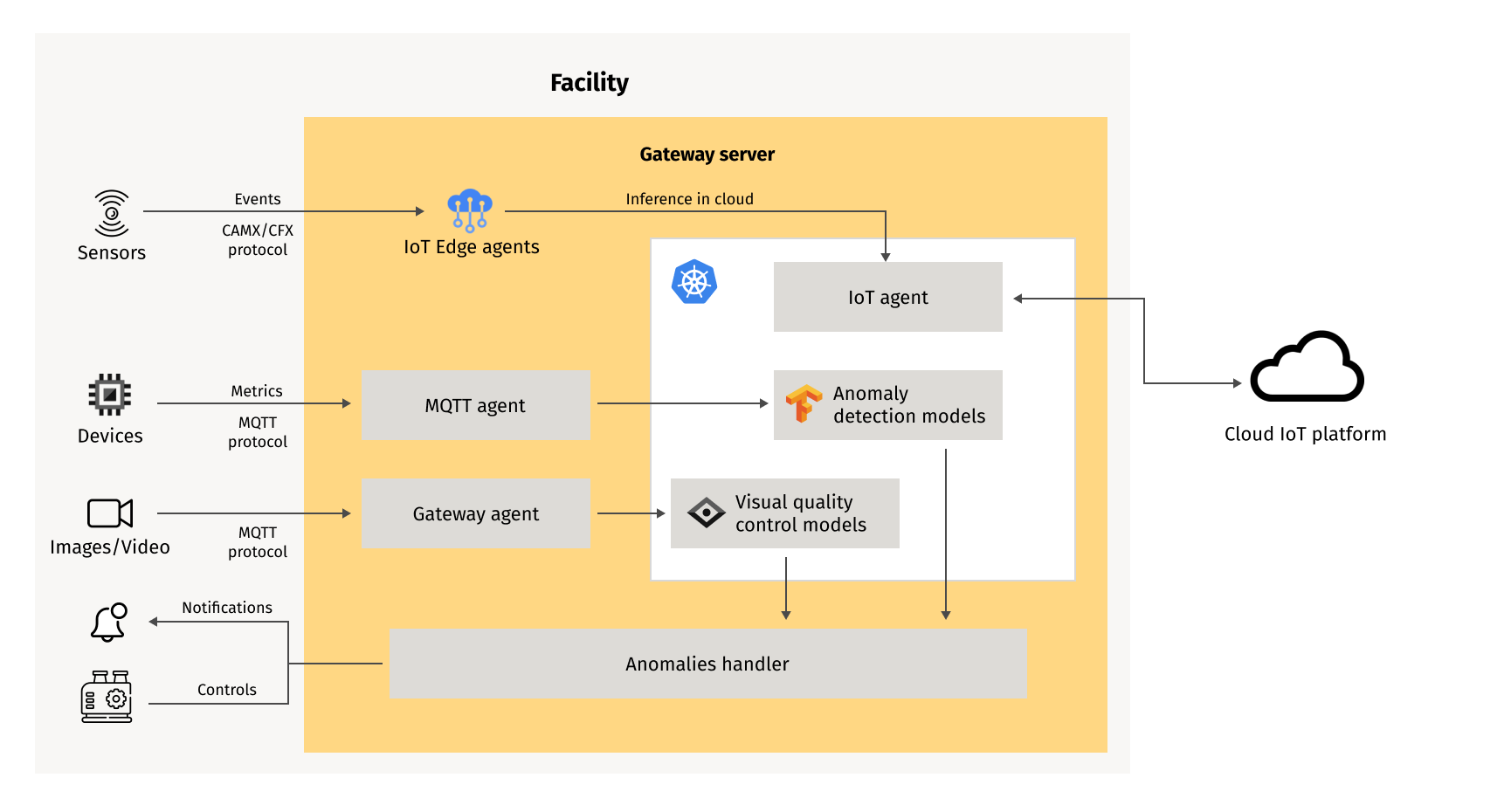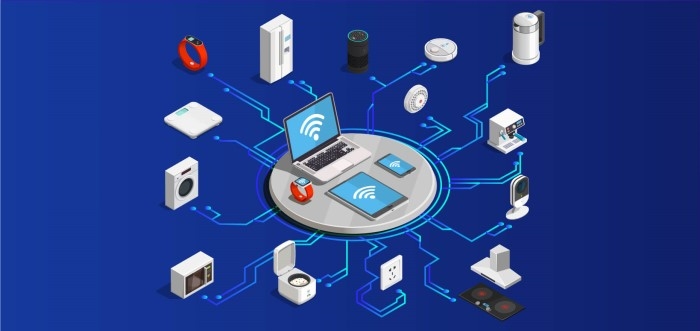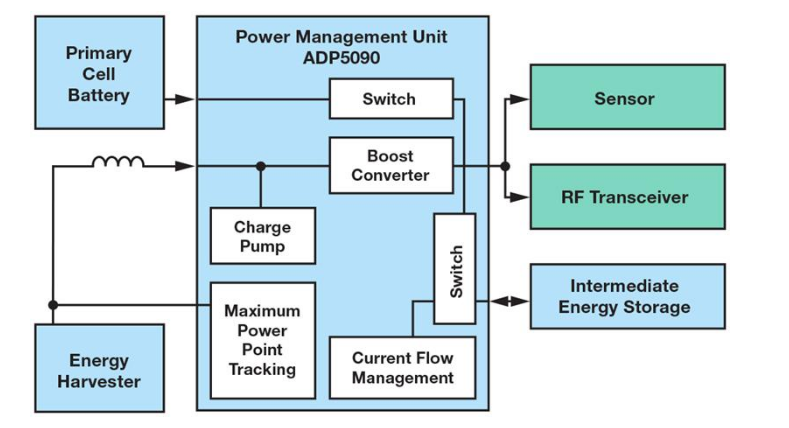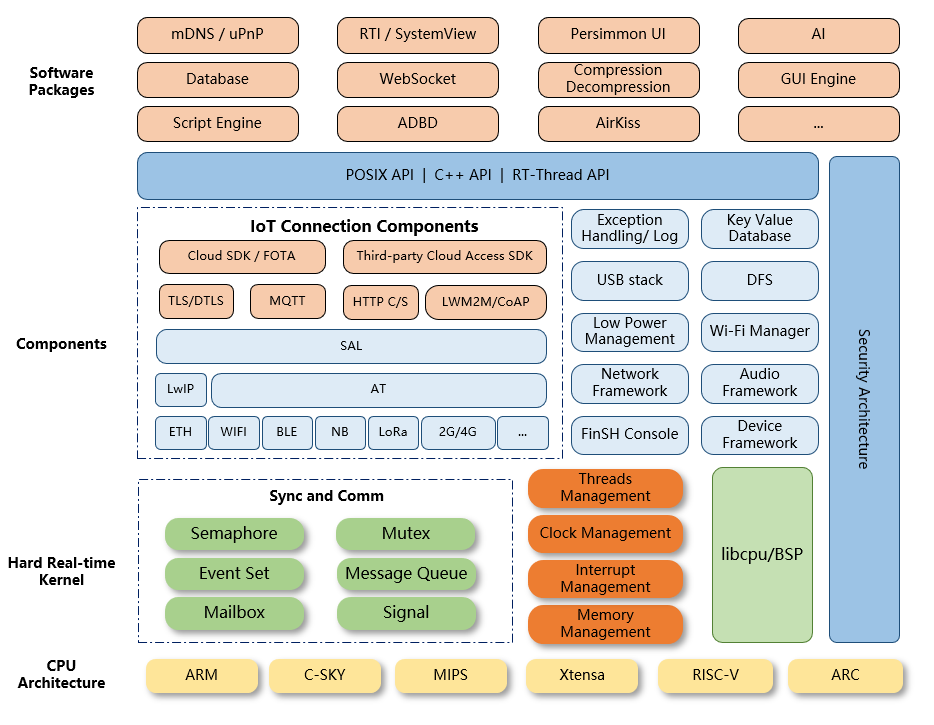Overview
How to choose the right wireless protocol for an asset tracking system?
The choice of wireless protocol is a key factor in asset tracking system design. The selected protocol depends entirely on the type of industrial application to be designed. The protocol choice determines the types of tags, routers, gateways, and other infrastructure required to interface with cloud and application layers. For short-range applications up to about 100 m, common personal area network (PAN) protocols include BLE, Zigbee, Z-Wave, and Wi-Fi. Some wide-area network (WAN) protocols include cellular (LTE), LPWA options such as LoRaWAN, NB-IoT, and Sigfox, which can provide effective ranges up to several kilometers. The following are the key parameters to consider when selecting a wireless protocol to make a solution economical, scalable, and efficient for industry requirements.
Short-range protocol comparison
| Parameter | NFC | RFID | Wireless LAN | Bluetooth 5.0 | Zigbee | Z-Wave | Thread |
|---|---|---|---|---|---|---|---|
| Open / Proprietary / Licensed | Proprietary / Certified | Certified | Certified | Certified | Certified | Certified | Certified |
| Practical range | 4 cm | Up to 600 m (varies) | 50 m | Up to 100 m | 100 m | 100 m | 100 m |
| Network deployment model | Point-to-point | Point-to-point | Broadcast, point-to-point, mesh | Broadcast, point-to-point, mesh | Star, mesh, cluster-tree topologies | Mesh | Mesh |
| Max data rate | 424 kbps | 640 kbps | 1 Mbps to ~500 Mbps | 2 Mbps | 250 kbps | 100 kbps | 250 kbps |
| Frequency range | 13.56 MHz | Low frequency 125–134 kHz; High frequency 13.56 MHz; UHF 433 and 860–960 MHz | 2.4 GHz and 5 GHz | 2.4–2.5 GHz | 2.4 GHz ISM band | 800–900 MHz | 2.4 GHz ISM band |
| Main applications and use cases | Short-range use cases such as electronic ticketing, mobile wallet payments with smartphones, and keyless access | Use cases requiring immediate identification such as inventory monitoring and cold-storage tracking | Typically used for shared internet connectivity and high-bandwidth local networks | Use cases requiring continuous data streaming, e.g., audio headsets and real-time peripherals | Use cases that require low power and tolerate low data rates, such as home automation | Commonly used in home automation | Use cases that require low power and tolerate low data rates, such as home automation |
Wide-area protocol comparison
| Parameter | Cellular (4G/LTE) | Dash7 | LoRaWAN | Sigfox | DigiMesh | EnOcean |
|---|---|---|---|---|---|---|
| Open / Proprietary / Licensed | Certified | Open | Certified | Certified | Proprietary | Certified |
| Practical range | Up to 31 km (line-of-sight, varies) | Up to 5 km | Up to 15 km | Up to 1,000 km (network-dependent) | Varies | Approx. 300 m |
| Network deployment model | Cellular | Node-to-node, star, tree | Star | Star | Point-to-point / mesh | Point-to-point |
| Max data rate | Download up to ~300 Mbps; upload up to ~150 Mbps | 167 kbps | EU: 300 bps to 50 kbps; US: 900 bps to 100 kbps (varies by region and spreading factor) | 100 bps | Varies | 125 kbps |
| Frequency range | 600/700/850/1700–2100/1900/2300/3500/5200 MHz (region-dependent) | 433/868/915 MHz ISM/SRD | 433/868/780/915 MHz ISM (region-dependent) | 868/902 MHz ISM (region-dependent) | 900 MHz and 2.4 GHz | 902 MHz, 928.35 MHz, 868.3 MHz, and 315 MHz |
| Main applications and use cases | General high-speed wireless data transmission and wide-area connectivity | Use cases that need long-range and low-power node-to-node communication | Good choice for bidirectional command-and-control in smart buildings or campus asset tracking | Use cases that need long-range, ultra-low data throughput and low power | DigiMesh is a proprietary protocol from Digi International | Use cases requiring energy-harvesting or battery-powered low-power devices |
Industry use cases for IoT-based asset tracking
Any industry application that requires improved workflows, loss prevention, service quality, or productivity is a candidate for asset tracking solutions. Depending on budget and return on investment, customers choose between traditional RFID-based systems and newer IoT-based tracking solutions. The following highlights common IoT asset-tracking deployments across industries.
Indoor vs. outdoor considerations
The solution design varies considerably between indoor and outdoor use cases. For outdoor applications, GPS can provide acceptable location accuracy. For indoor environments where GPS signals are weak or when minimum detectable distances between two points are limited, specialized BLE features such as Angle of Arrival (AoA) and Angle of Departure (AoD) are used to identify device position. AoD allows a receiving device to compute its position in space using bearing information and positions from multiple beacons through triangulation, while AoA tracks the arrival angle of a signal at the receiver. Using these techniques, indoor positioning accuracy of about 0.5 m can be achieved, which is useful in many industry scenarios.
Manufacturing (smart manufacturing and inventory management)
Manufacturing automation is a core area for process optimization. Tracking assets from raw materials to finished products at each stage supports more efficient and productive systems. Beyond barcodes and legacy RFID solutions, BLE beacon- and Zigbee-based tag systems are increasingly used for mobile asset tracking, asset flow management, and materials handling. Integrating asset tracking with inventory management enables near-real-time inventory updates and helps avoid stock issues.
Transportation and logistics
Logistics and transportation have been major beneficiaries of asset tracking solutions. Vehicle tracking, courier and bag tracking, pallet tracking, smart parking, and supply-chain facility monitoring are key areas. Solutions built on Wi-Fi, LTE, and LPWAN have been widely deployed. Common applications include remote asset tracking, predictive maintenance, real-time fleet monitoring, warehouse capacity optimization, and route optimization.
Healthcare
Healthcare organizations use IoT asset tracking to monitor high-value equipment, optimize utilization, reduce theft, and improve timely availability. Solutions also track human assets and staff locations to improve patient care and operational response. Most deployments use short-range protocols such as BLE, Zigbee, Z-Wave, and Wi-Fi, often integrating wearables, smart tags, and mobile applications.
Retail
In retail, asset tracking is often implemented to prevent loss and unauthorized access to critical areas, and to improve customer experience and checkout automation. Store inventory management is a highly effective use of IoT asset tracking, enabling better floor-space utilization, real-time inventory visibility, and improved productivity.
Engineering and integration
To build an IoT-based asset tracking solution tailored to industry needs, customers should engage partners with expertise in product engineering as well as cloud and application development. That combination helps ensure requirements are met while producing an efficient technical solution.
 ALLPCB
ALLPCB


